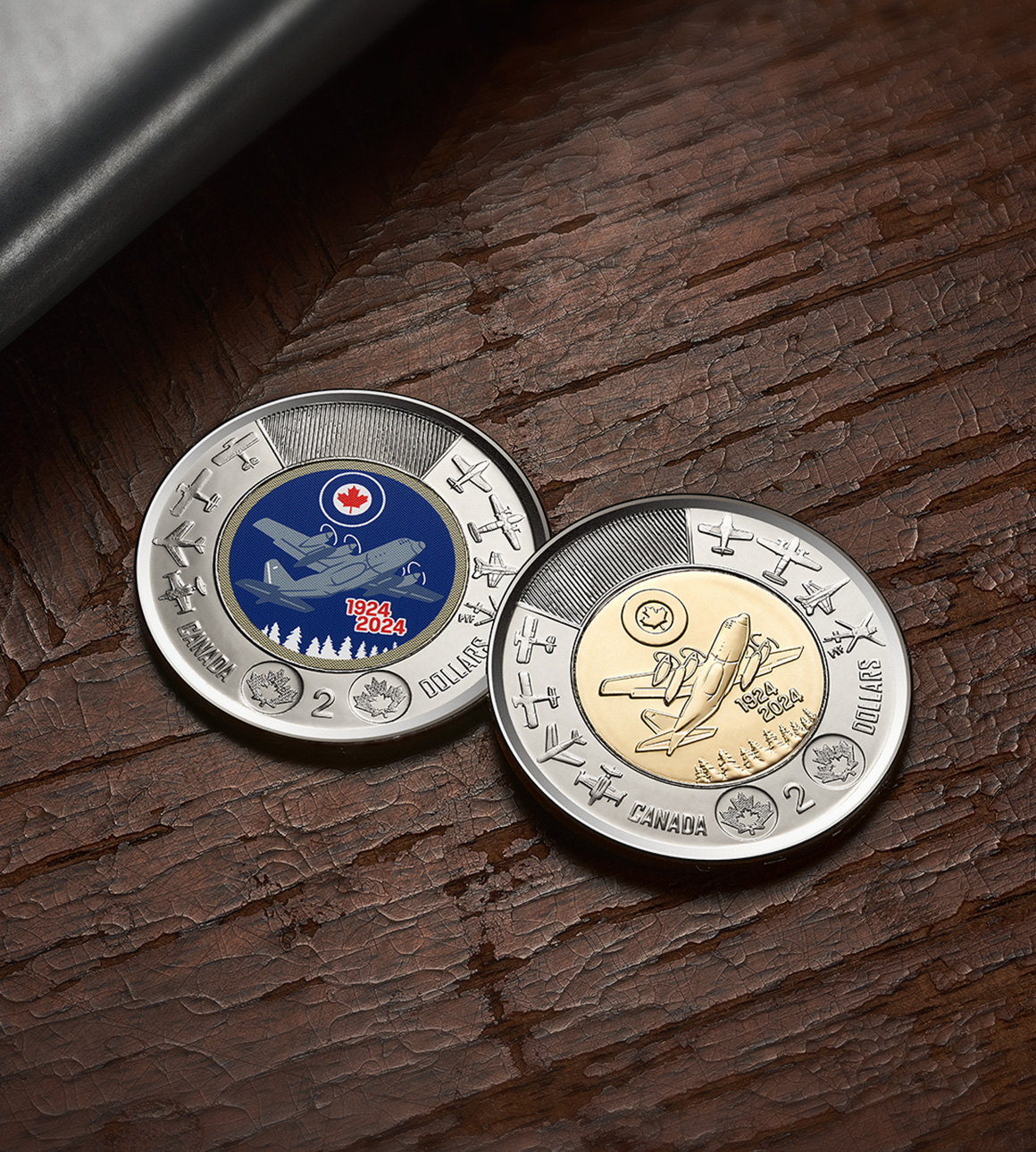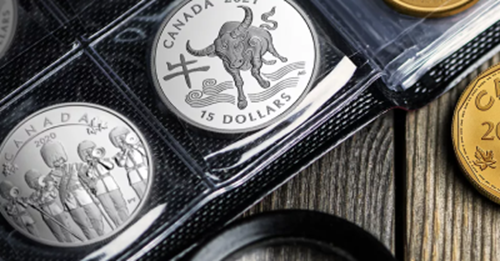Behind the Design: RCAF Centennial Commemorative $2 Circulation Coin
- Sep 18, 2024
- Canadiana
- 2 minute read
Discover the design details behind our newest commemorative circulation coin honouring the 100th Anniversary of the Royal Canadian Air Force (RCAF).
Spanning 100 years of missions, machinery, and milestones, the coin design (created by Toronto-based illustrator Pui Yan Fong) features nine of the RCAF’s most notable aircraft from over the course of its century of service—plus a few other distinct elements.
Keep reading to learn more about the design showcased on our 2024 RCAF Centennial $2 coin.


Discover the design details behind our newest commemorative circulation coin honouring the 100th Anniversary of the Royal Canadian Air Force (RCAF).
Spanning 100 years of missions, machinery, and milestones, the coin design (created by Toronto-based illustrator Pui Yan Fong) features nine of the RCAF’s most notable aircraft from over the course of its century of service—plus a few other distinct elements.
Keep reading to learn more about the design showcased on our 2024 RCAF Centennial $2 coin.

RCAF roundel: RCAF aircraft have been marked with a uniquely Canadian roundel design since 1946. This roundel is featured on many of our other RCAF Centennial coins as well.
RCAF Centennial (double dates): Commemorating a century of service, the RCAF was formed on April 1, 1924, just 15 years after the first powered, controlled, heavier-than-air flight in Canada in 1909.
Boreal forest: The tips of the conifer trees on the coin represent a distinctly Canadian landscape over which the RCAF frequently flies.
CC-130 Hercules (Model H): A long-range aircraft that has been a mainstay of the RCAF transport fleet for over 60 years. Its upward angle pays homage to the RCAF motto, Sic Itur ad Astra (“Such is the Pathway to the Stars”).
Finch Mk. II: The basic training aircraft at 12 Elementary Flying Training Schools during the Second World War. At the end of the war, it was placed into storage or used as instructional airframes.
CSR-123 Otter: Could be outfitted with floats and skis and was first used for general transport duties. It was also used in support of four UN peacekeeping operations.
F-86 Sabre Mk. 6: A fighter aircraft with six variants, two of which were equipped with Canadian-designed and built engines. The RCAF employed it in both Europe and Canada.
CF-100 Canuck Mk. 5: The only Canadian-designed interceptor aircraft to go into production, its all-weather capability and reliable twin jet engines made it the standard RCAF interceptor in the 1950s.
CT-114 Tutor: The RCAF's primary jet trainer until 2000. It has also been used for air demonstration teams such as the Golden Centennaires and the Snowbirds.
CC-115 Buffalo: Intended to serve as a light tactical transport, it became best known for its search and rescue role. It also served on the Canadian contingent of the UN Emergency Force II.
CF-188 Hornet: A multi-role fighter aircraft that is fast, light, and maneuverable, making it ideal for military operations.
CH-146 Griffon helicopter: Supports tactical transportation, search and rescue, surveillance and reconnaissance, evacuations, and counter-drug operations.
-
From the skies to your change, learn more about the 2024 commemorative circulation coin that represents a century of RCAF history and heritage.
Royal Canadian Air Force intellectual property used courtesy of the Department of National Defence.



